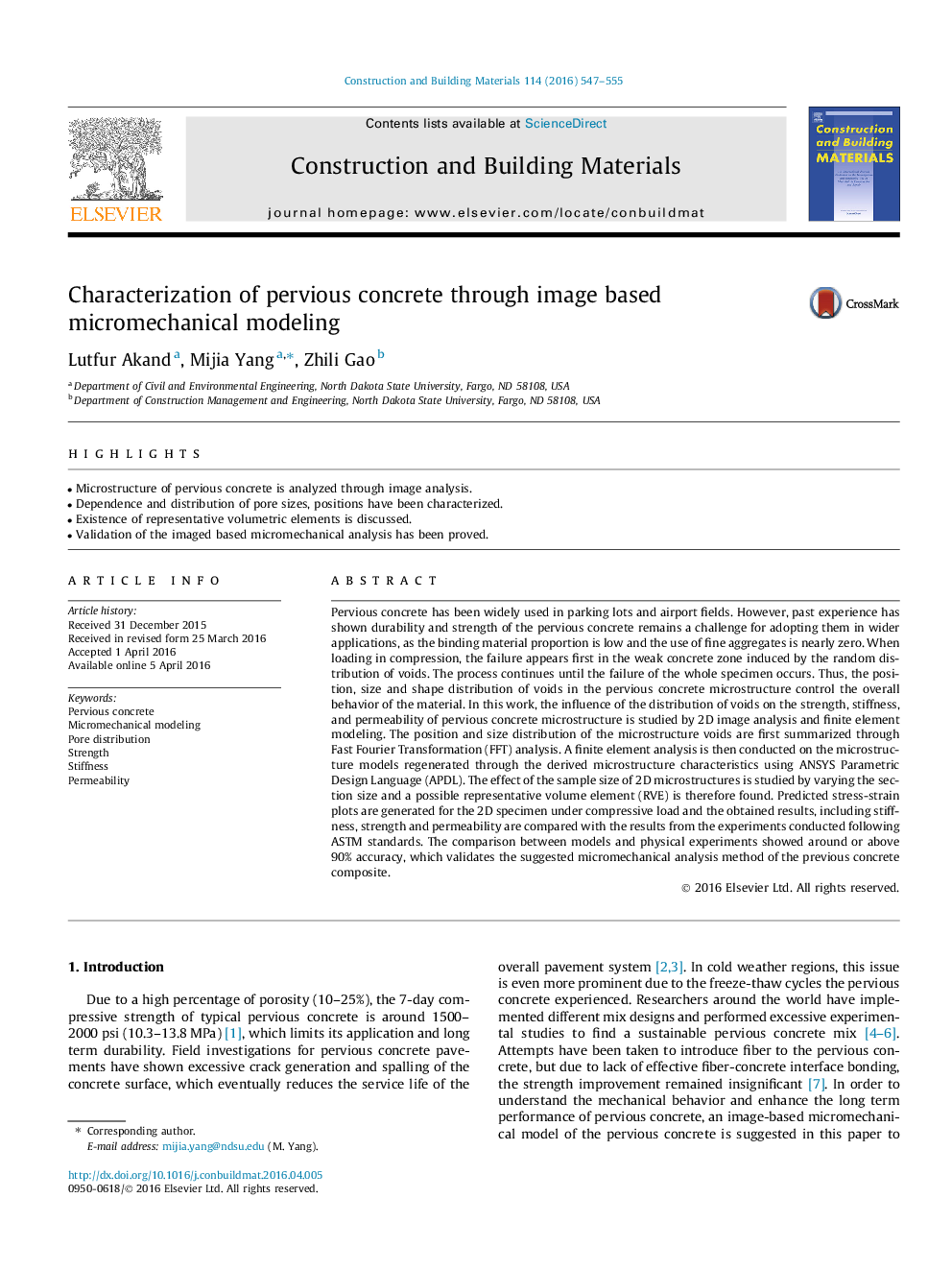| Article ID | Journal | Published Year | Pages | File Type |
|---|---|---|---|---|
| 256011 | Construction and Building Materials | 2016 | 9 Pages |
•Microstructure of pervious concrete is analyzed through image analysis.•Dependence and distribution of pore sizes, positions have been characterized.•Existence of representative volumetric elements is discussed.•Validation of the imaged based micromechanical analysis has been proved.
Pervious concrete has been widely used in parking lots and airport fields. However, past experience has shown durability and strength of the pervious concrete remains a challenge for adopting them in wider applications, as the binding material proportion is low and the use of fine aggregates is nearly zero. When loading in compression, the failure appears first in the weak concrete zone induced by the random distribution of voids. The process continues until the failure of the whole specimen occurs. Thus, the position, size and shape distribution of voids in the pervious concrete microstructure control the overall behavior of the material. In this work, the influence of the distribution of voids on the strength, stiffness, and permeability of pervious concrete microstructure is studied by 2D image analysis and finite element modeling. The position and size distribution of the microstructure voids are first summarized through Fast Fourier Transformation (FFT) analysis. A finite element analysis is then conducted on the microstructure models regenerated through the derived microstructure characteristics using ANSYS Parametric Design Language (APDL). The effect of the sample size of 2D microstructures is studied by varying the section size and a possible representative volume element (RVE) is therefore found. Predicted stress-strain plots are generated for the 2D specimen under compressive load and the obtained results, including stiffness, strength and permeability are compared with the results from the experiments conducted following ASTM standards. The comparison between models and physical experiments showed around or above 90% accuracy, which validates the suggested micromechanical analysis method of the previous concrete composite.
